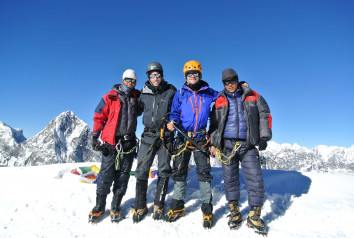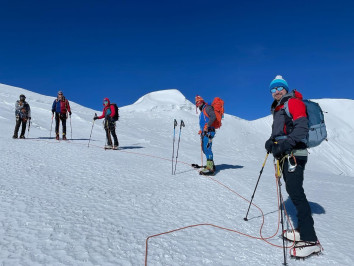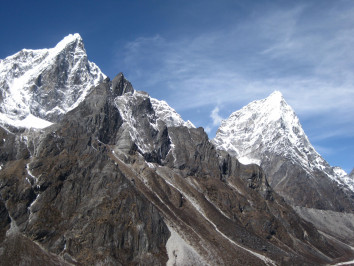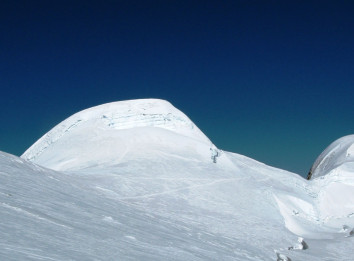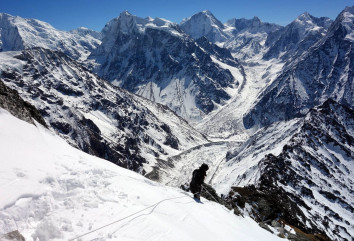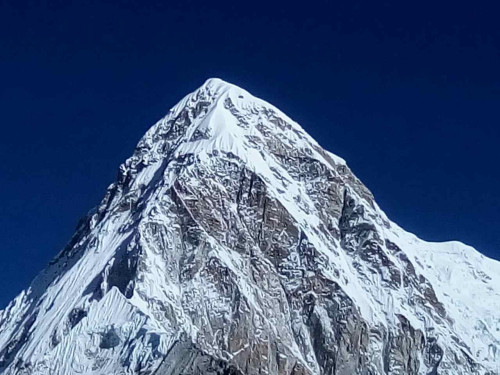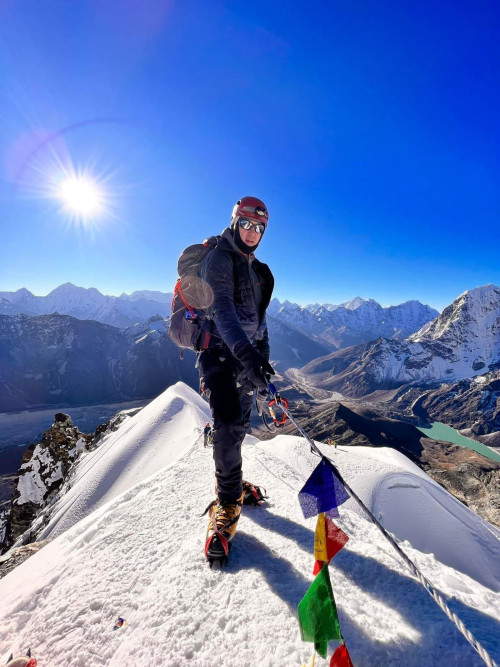Chulu West Peak Climbing - Trip Highlights
- Annapurna Circuit trekking and Chulu West Peak summit.
- Amazing mountains like the Annapurna range, Manaslu, Damodar, Chulu East, Gangapurna Himal, Himlung Himal, and other prominent peaks of the Annapurna region.
- Trek to Thorung-La Pass, Thorung-Phedi, and to Muktinath.
- Least crowded trekking and climbing which is best for genuine climbers.
- Best trekking peak above 6,000 metres for gaining climbing experience for intermediate and beginner climbers.
- Multiple acclimatisation days and experienced Sherpa guides to ensure your utmost safety.
- Tibetan culture influenced the lifestyle of people at Chame, Pisang, Manang, and Jomsom.
Chulu West Peak Climbing - Trip Overview
In the Annapurna region, at 6,419 metres, Chulu West Peak is one of the best trekking and climbing destinations. Possibly one of the highest climbing peaks above 6,000 metres, this peak is the favourite among intermediate and aspiring mountaineers. With the Annapurna Circuit trekking and Chulu West peak climb, the Chulu West Peak expedition is the best tour package in the Annapurna region you could find.
Climbing Chulu West Peak is exciting and challenging, less technically and more physically. For experienced climbers and beginners, climbing this peak demands physical endurance. The adjacent Chulu East peak is more technical than Chulu West. The straightforward climbing style of Chulu West peak demands less technical expertise. Sherpa guides will train you at base camps regarding the fixed rope climb, crampons, ice axes, etc. With proper climbing training, physically fit high-altitude trekkers can find the summit climb comfortable.
In the mountain maps, the indication of Chulu West Peak, Chulu East Peak, and other peaks around it is not proper. It confuses the climbers regarding the climbing peak and which one to summit. Four different mountains in the Chulu region can be found on the Chulu Peak climbing map. But, our experienced climbing guides who have experience guiding at Chulu peaks know these individual peaks. Thus, you'll be on the summit of Chulu West with seasoned climbing Sherpa guides.
Climbing one or both among Chulu Peaks and trekking the Annapurna Circuit is spectacular high altitude trekking. It stands tall on the awe-inspiring landscape of the Annapurna region. Being a part of Manang Himal, a member of Damodar Himal, Chulu West Peak has Mesokanta La and Marsyangdi River flowing to South.
Climbing Chulu West Peak is rewarding. The majestic Annapurna at 8,091 metres, Dhaulagiri at 8,167 metres, and Nilgiri North at 7,061 metres. From the Chulu West summit, you could see the world's highest lake, Tilicho Lake, at 4,919 metres. The landscape filled with mountains, glaciers, and moraines is countless when viewed from the summit. You'll get the proper glance of witnessing the sheer beauty of the Annapurna region.
Chulu West Climbing Route
We'll hike to Chulu West Peak Base Camp at 4,900 metres from Ledar at 4,200 metres. We'll set up tents at base camp for overnight and accommodations. The Chulu West Peak High Camp and summit push route follows the North-West Ridge. The complete summit climb from High Camp and base camp return takes one full day of 8 hours. We returned to the base camp because of difficulty establishing tented camps on higher slopes.
Chulu West Peak Climbing - Itinerary Overview
Adventurous trekking and climbing of Chulu West Peak begin with a drive from Kathmandu to Syange. Hiking along the Marsyangdi River, the diverse landscape and lush vegetation of Annapurna Sanctuary is spellbinding. From Syange, we'll hike to Dharapani, Chame, Pisang, Ngwal, and acclimatise in Manang. Acclimatisation is necessary to adapt to the altitude and thinning oxygen.
On the 8th day, we'll hike to Letdar Phedi at 4,130 metres. From here, we'll leave for Chulu West base camp at 4,900 metres. If you need acclimatisation, we'll arrange a buffer day for it. We'll ascend Camp I at 5,100 metres following the weather reports. We'll climb the Chulu West Peak Camp II and summit one day each. After reaching Chulu West Peak summit, we'll return to base camp and stay overnight. We'll have a contingency day if team members need rest before leaving for Letdar.
We'll cross Thorung-La Pass and hike down to Jomsom and Muktinath in the coming days.
The rugged and arid landscape of Jomsom never fails to amaze us. Also, the deepest Kali Gandaki gorge is a thing to witness. We'll fly to Pokhara from Jomsom and drive to Kathmandu.
Chulu West Peak Climbing - Best Time
There are two climbing seasons in a year, Spring and Autumn. Chulu West climbing becomes splendid with clear weather, stable temperature, and perfect sightseeing. Other than that, crossing Thorung-La Pass and Jomsom in Spring and Autumn is best. Flora and fauna around Annapurna Sanctuary flourish during these seasons. Thus, you'll get a chance to hike on the most serene landscape of Annapurna.
Unlike the Everest region, Chulu West Peak doesn't receive many climbers. Thus, you could have a peaceful Annapurna circuit trekking and Chulu West climbing experience.
Some experienced climbers often prefer Chulu West Peak climb in winter. With adequate preparations and stable weather, climbing this peak in winter is possible. However, even with pre-arrangements of this expedition, it's not 100% sure that the climb will be successful.
Chulu West Peak Climbing - Difficulty
Climbing Chulu West Peak is a straightforward climb. There are no arduous sections that demand technical expertise. With a day of training, you can climb the summit alongside help from our Sherpa guides. We'll hike for 6 hours each day. Thus, physical endurance training is a must for this expedition.
Prepare yourself with aerobics, running, hiking, and cycling. Alpine level 1 courses are also best if you have any. Prior high altitude trekking and climbing of any 6000 metres peak becomes helpful.
Our Sherpa guide will brief you about crampon points, abseiling, anchor points, fixed lines, etc. With these preparations, you can comfortably summit Chulu West Peak.
Chulu West Peak Climbing - Accommodation
Chulu West Peak expedition is tea house-based accommodation. The tea houses serve nutritious foods with a variety of food items. To keep up with energy, you have to eat adequately. If you have any dietary requirements, inform us before the expedition.
At Chulu West base camp, we'll be accommodated in tented camps. Here, our team will set up tents and a kitchen. At higher altitudes, you may not feel like eating food. Try to avoid consuming alcohol and smoking during the expedition.
Why World Expedition Nepal for Chulu West Peak Climbing?
World Expedition Nepal focuses on and promotes peak climbing and expeditions in Nepal. We have been providing tour services since 2017 by registered and licensed under Nepal Government. In the Annapurna Sanctuary region, we'll make sure that you'll have complete joy alongside the adventure of high-altitude climbing.
Our professional and experienced guides will ensure your utmost comfort and safety on Chulu West Peak climbing. We'll make this tour an unforgettable experience for you. Also, the health and safety of our clients is our primary motto. Our guides for these expeditions have mountain skills certification. They come with expertise in mountain medicine, first aid, and rescue operations.

 Recommended On
Recommended On
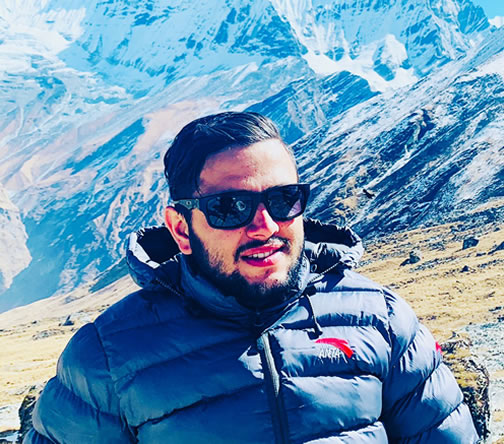



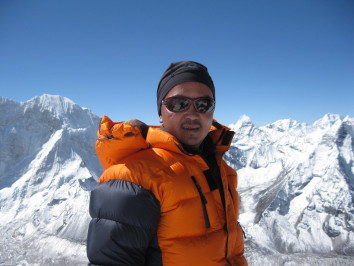
 6000m Peak Climbing , Nepal
6000m Peak Climbing , Nepal  29 Days
29 Days  US$3400
US$3400



-1.JPG)
